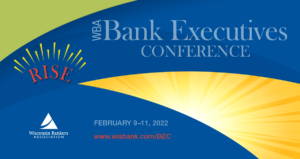Personalized Strategic Plans
To manage board and shareholder expectations, design a strategy that fits the unique composition of your institution
Balance sheets are healthier than they've been since pre-recession years, yet earnings remain stubbornly elusive for most financial institutions. In some cases, the challenge of achieving high-performance in a banking landscape that features persistently low rates, extreme regulatory burden, and intense competition on multiple fronts creates friction in the board room. If bank management, directors and shareholders don't share expectations for the bank's performance, time and energy will be wasted on efforts that don't drive the institution toward that unified goal. The bank's strategic plan is more important than ever as it serves as the bedrock and written understanding of that shared vision and the steps to achieve it. In order to maintain buy-in with the strategic plan over the course of its three- to five-year life, the plan must reflect the unique perspectives and priorities of the bank's shareholders, directors and management.
Start with a Shared Strategy
The best – and perhaps only – way to keep management, directors and shareholders on the same page as the institution moves into the future is for all three stakeholders to start with the same goals, risk tolerance and vision for the bank. The strategic plan can be a powerful tool in clearly defining those elements, especially when all parties do not have the exact same vision. "You don't need 100 percent agreement, but you do need 100 percent buy-in," said Thom Back, senior manager at Wipfli. Ken Johnson, principal of Ken Johnson Consulting, recommends all bank directors participate in an anonymous questionnaire prior to the strategic planning process; not only does this demonstrate how the board as a whole feels about the bank's current situation, but it also allows for discussion of any items where there is a large discrepancy. "It's helpful to have everyone grounded to what others' perspectives are," Johnson explained. "That starts you off in the same place and helps you set realistic goals."
In drafting the specifics of the strategic plan, management must balance the board's performance goals with the institution's clearly defined risk tolerance. "You have to ensure that there's a balance between growth desires, capital levels, and dividend targets and understand which of those goals is the highest priority," said David Koch, president/CEO of Farin & Associates. On a more granular level, Cass Bettinger, president of Cass Bettinger and Associates, explained that strategic planning should involve the board setting a target return on equity range and capital ratio based on the bank's risk management strategy, which then enables management to calculate what the bank's target return on assets must be. It is essential for management to have a crystal clear understanding of the board's risk tolerance in order to successfully balance that equation. "If the board and management work together on that basis, at the end of the day you'll have a strategic plan that is very clear about what it's designed to produce for shareholders and what all the objectives and strategies are," Bettinger said.
Ultimately, both the goals and risk tolerance of the bank are guided by the directors' shared understanding of the institution's mission, which should be defined with input from directors, management and shareholders. "Good strategic plans are about a lot more than just the numbers," said Elliot Berman, principal of Bowtie Advisors. "There needs to be a strategic planning process, not just a budgeting process," Berman continued. "The board should get involved at the front end of that process. At the outset, they need to provide a high-level sense of direction for management, and at the end need to approve the plan."
Understand Your Key Stakeholder Groups
While each bank has a unique composition of key stakeholders, most have three main groups: directors, executive management and shareholders. All three contribute different perspectives and skillsets to the creation of the bank's mission and the strategic plan built on that mission. Directors connect shareholder interests with management's tactics by guiding the institution at a high level. "It requires business acumen and understanding to lead the organization toward a vision that will improve the financial performance of the bank," Johnson explained. The board's role is also to use their business acumen and leadership abilities to represent the shareholder's interests. "The board's responsibility to shareholders for strategic planning is the single most important responsibility the board has," Bettinger pointed out. Paying attention to increasing shareholder value can help mitigate investor dissatisfaction with the bank's performance as well as provide management with actionable guidance. "Management gets the most out of the board when they spend 70 percent of the time looking forward," said Berman.
Management's role is to convert the board's vision for the institution with the specific tactics bank staff will need in order to accomplish that mission, as well as to ensure that the board is properly equipped to guide the bank. "Understand the strengths, skills and relationships that each director brings to the table," said Koch. "Strengths-based management is key to a successful, engaged board." The CEO needs to be the driver in aligning the expectations of directors and shareholders to the bank's performance. "The strategic planning process has to engage the board and management, working together to fulfill the mission of the bank," said Bettinger. The best way to accomplish that, according to Johnson, is for the CEO to ensure that the bank's strategic planning process includes the right people and the right information. "It's not easy, but the CEO is the one who is charged with organizing it," he said.
Part of ensuring the right people are included is cultivating a thorough understanding of the bank's shareholder base. "The board and management need to have an understanding of what their shareholder base is looking for, because that will influence the strategic plan," said Mark Koehl, CPA, partner at Wipfli. "Knowing the shareholder group is key to helping the bank's plan be successful." It's unwise to generalize with shareholders, and each bank will have a unique mix of investors depending on its size and ownership structure. However, there are a few categories of shareholder that many banks share: 1) mature shareholders who may be nearing retirement, and therefore are looking for dividend growth and liquidity, but also community involvement; 2) second- or third-generation shareholders, who may no longer be based in the community and therefore are primarily interested in earnings per share growth and return on equity; 3) mid-life investors who may feel disillusioned with community banking due to current political and economic headwinds, and therefore wish to maximize the bank's sale price and look for a partner.
In addition, from each of these groups (or others that exist at your institution), sometimes activist investors arise. Between 2012 and 2014, only 8 percent of SEC filings showing at least 5 percent ownership and "activist intent" came from financial institutions. However, in 2015, that jumped to more than 17 percent. "Activist investors see the value of the bank differently than the board and management," Back said. "It doesn't translate to 'wrong,' they just have a different vision for the bank." The best way to prevent this dissonance is through consistent and clear communication between all stakeholder groups. "Activist investors make noise either because they see a financial opportunity being missed or because they care about the bank but feel like they aren't being heard," Koch explained. "Shareholders need to feel that the strategic plan reflects their needs and their input and their priorities, and the only way to do that is to engage them in the process," Bettinger agreed.
Keeping In Step
Communication and transparent monitoring are the two essential drumbeats that management should use to keep all stakeholders in step for the duration of the strategic plan. "Transparency is a very key aspect," said Back. "Not transmitting exactly what your intentions are can sometimes paint you into a corner worse than laying out the plan. It also maintains trust, which is critical." Koch also said transparency on the key goals and objectives of the plan should be a top priority. "Senior management's role comes down to consistent positive messaging with the board and staff," he said. "There's no magic there, just understanding the audience and being honest, and if the message isn't positive speak to what can be done to turn things around." Another part of management's role in open stakeholder communication is to solicit input from large shareholders on a consistent basis, especially as it pertains to the strategic plan. "CEOs and directors aren't performing their job properly if shareholders are not involved in the strategic planning process," said Johnson. This doesn't need to occur monthly, or even quarterly, but the lines of communication should never be closed. "You're not necessarily seeking out input from shareholders who aren't on the board on a frequent basis, but you have to always be open to answering questions," said Koehl.
While responding to shareholder questions and expectations for bank performance is a complicated interaction that involves a lot of different factors, not just the strategic plan, Berman suggests using the strategic plan as a framework when communicating with shareholders. "You don't have to get into details, but use the plan and what you're doing with it as the outline," he advised. The most important feature of stakeholder communication, especially to shareholders, is the effort you put into it. "If you focus on your communication with your shareholders in the same way you focus on communication with major customers or prospective customers, you'll see results," said Berman.
The other vital aspect of transparency is how stakeholders monitor the bank's progress in accordance with the strategic plan. This requires clear communication timing, specific numerical goals and metrics for measurement. "It's really important that management and the board discuss the timeframe," said Bettinger. "For community banks in particular, it's not about short-term profits but long-term value." Specific numerical goals can help avoid rewarding a focus on short-term gains by providing specific long-term targets. "Once you define the mission or vision, the CFO needs to put it down on paper as a pro forma balance sheet and income statement. Then you know what's supposed to be happening," Johnson advised. "While the numbers are not the plan, there do need to be specific, measurable goals," Back agreed.
Measuring the institution's performance against those goals requires metrics and testing, because no institution will ever be in total alignment with their strategic plan at all times. "Every plan is wrong in some way," said Koch. "If it's not, your plan either isn't specific enough or you're very lucky." One popular way to quantify the alignment between the plan and performance is found by examining the key assumptions that may not be right via stress testing. "It's not about sticking one number out there as your plan. It's also about knowing the three or four most important factors in getting there," Koch explained. "In the risk management process we tend to focus mainly on what might go wrong, but it is only useful to the extent that it helps you identify what needs to go right in order for you to hit your goals." Those benchmarks and milestones are crucial signs on the roadmap of your strategic plan, so all stakeholders should be able to identify them.
Clear communication of the bank's strategic objectives and how to track them is also how the bank leadership determines when it's time to reassess the strategic plan as a whole. "The strategic planning process isn't an annual event," said Bettinger. "It's ongoing. You always have new opportunities and new threats emerging." As those new opportunities and threats arise, it is inevitable that the strategic plan will adapt accordingly. With the joint efforts of shareholders, directors and bank management, the bank will also rise to meet them.
By, Amber Seitz




